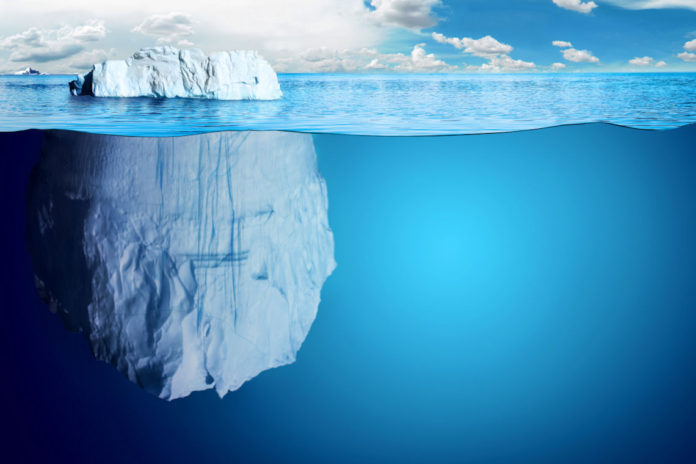An iceberg is a huge piece of ice floating in the ocean. The ice is created or ‘calved’ when a chunk of a glacier breaks off into the sea. Large icebergs may also break off from shelf ice. At one time, icebergs were a major danger to ships at sea. However today, icebergs are carefully tracked and studied.
The Danger of an Iceberg
What Makes Icebergs Dangerous?
Ice from freshwater sources (glaciers and ice shelves) is less dense than sea water. As a result, ice floats in the ocean. However, about 90% of the ice remains below the ocean’s surface. It is difficult to judge the size and shape of the underwater part of icebergs. Therefore in the past, icebergs were a serious danger to ships at sea.
How Did An Iceberg Sink the Titanic?
In 1912, the RMS Titanic was the largest ship in the world. On its first trip, the Titanic sailed from the United Kingdom to the United States. There were over 2,200 people on board the ship’s maiden voyage. The ship was built with many safety features such as watertight compartments and doors.
Four days into her voyage, the Titanic struck an iceberg. The iceberg ripped open five out of sixteen watertight compartments. As the compartments flooded, the ship began to sink. Despite the ship’s safety features, the lifeboats of the Titanic could only carry about 1,200 people. Due to this limitation, over 1,500 lives were lost.
Reflections
Vocabulary
- glacier
- iceberg
- ice shelf
Notes
- An iceberg is a chunk of ice floating in the open sea.
- Icebergs are created when ice breaks away from glaciers or an ice shelf on land.
- About 90% of an iceberg is hidden below the water and can be a hazard to ships at sea.
Bibliography
- A Hydrosphere Study Guide
- About the Hydrosphere
- What are icebergs?, NOAA.

